Identity of Boka Kotorska Croatians - Scientific Conference by Ivo Pilar Social Research Institute
May 12, 2021 - Earlier in May, Boka Kotorska, in the town of Tivat in Montenegro, was the host of the scientific conference "Identity of Boka Kotorska Croatians" which will introduce changes in Croatian education.
Croatia has a big diaspora, no secrets there, but its worldwide spread makes you miss the region.
In Boka Kotorska, in Montenegro, Croatia's first neighbor on the southern border after Dubrovnik, not only is there a huge population of Croatians, but they also have a significant cultural impact on the area. So significant it even calls for social science to step in.
As Ivo Pilar Social Research Institute reported on its website, May 6 to 9 saw the conference “Identity of Boka Kotorska Croatians“. The three-day conference gathered crucial scientific institutes in Croatia to the town of Tivat in the Bay of Croatian Saints. Headed with Ivo Pilar Social Research Institute, Croatian Catholic University, Croatian Studies Faculty, Institute of Croatian Language and Linguistics as well as Institute for Historical Sciences in Zadar attended the conference while Croatian ministries of European, and Foreign Affairs, Science and Education, Culture, and Media, as well as Croatian Central State Office for Croatians Outside of the Republic of Croatia, founded the event.
„The scientific conference went well as well as signing conclusions with recommendations that that knowledge on Bokelj Croatians we learned on this conference enter the Croatian national curriculum in important subjects. These conclusions are the crown of our efforts to launch this conference in public, not just in an academical way, but to massively popularize to ensure long-term benefits for Bokelj Croatians as for every educated citizen of Croatia and Montenegro“, said Dr. Željko Holjevac, head of the Ivo Pilar Social Research Institute.
Conference conclusions suggest additions to the curriculum documents on key definitions of Croatian National Identity to make space for Croatians outside Croatia, including Boka Kotorska Croatians. Identity features and creativity of Bokelj Croatians in Croatian education, and the book „Boka Kotorska - the Bay of the Saints and Croatian Culture“, by Vanda Babić to be the mandatory literature for tourist guides in Montenegro.
Final meetings at the conference, as well as sailing with a „Katica“ ship through Boka Kotorska Bay, Saw the participation of Boris Bastijančić, the advisor and representative of the Montenegro president and representer of Croatian parliament and MP, Zdravka Bušić, and others.
„I'm glad to be at this scientific conference, and I want to thank everyone's effort for something like this to happen in Boka Kotorska. I would especially like to thank students that took part in this and gave their part as young people who love the truth of Boka, the place of saints. This is a message that we too need to do something to mark this time with love, hope, and faith“, said the Kotorska bishop, mons. Ivan Štironja.
Some Croatians live outside of Croatia, but maybe you would want to live in Croatia. Learn more about living in Croatia on our TC page.
For more about the Croatian Diaspora, follow TCN's dedicated page.
Best Faculty at Zagreb University: Faculty of Agriculture Scores Highest in NTU Ranking
May 11, 2021 -The oldest university in Croatia is the one in Zagreb, and the best faculty at Zagreb University is the Faculty of Agriculture, according to the NTU global ranking of 800 universities worldwide.
The quality of Zagreb University, according to the global NTU ranking conducted by the National Taiwan University, is in decline. On the list of 800 Universities worldwide, Zagreb University was ranked 478th best in the world, and in recent years it was levitating between 551st and 600th place. But, as Srednja.hr reports, the overall decline of quality has an exception on that list, and it's thanks to the Faculty of Agriculture.
The Faculty is ranked to be the best at Zagreb University, and the area of agriculture on the global list is ranked between 301st and 350th place. That is the ranking of the area, but also under the criteria of research interest, the ranking is even better, 87th place, thus making it the only thing at Zagreb University to be in the top 100 on the list.
„Even though it's the oldest human occupation, agriculture today is light years away from what our grandparents know. Agriculture is part of the STEM area (‘science, technology, engineering & mathematics), and it's actually highly technological. There are several reasons why this sector so is fastly modernized. For starters, the production of food and raw ingredients to produce food is the most important human activity that will always have demand. To keep up the step with the increasing number of population, less and less arable surfaced and the increasing living standards, agriculture had to modernize significantly, and introduce newest technologies“, writes Srednja.hr.
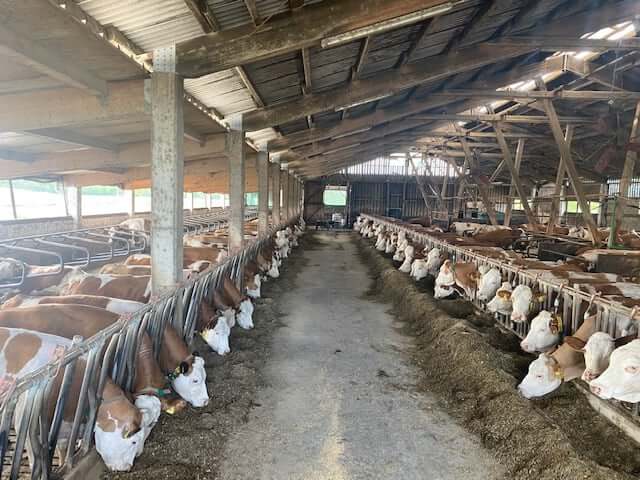 © Sveučilište u Zagrebu Agronomski fakultet
© Sveučilište u Zagrebu Agronomski fakultet
The Agriculture Faculty in Zagreb was founded in 1919. As the Faculty's official website reports, they have over 450 employees today who are highly motivated to pass their knowledge to around 2,500 students, which they consider their greatest value that they add to society.
„By connecting with foreign universities, both from Europe and worldwide, we have international cooperation in both teaching and scientific research area, and student mobility. Successful participation in bilateral and multilateral research programs, exchanges of students, young scientists, and university lecturers, as well as securing scholarships contribute to the visibility and recognition of the Faculty on all levels“, says the Agriculture Faculty.
The Faculty's personnel annually publishes 280 scientific papers, and in the last decade, 160 active research projects are ongoing with 75% of investments coming from domestic sources and the rest from international ones. Scholarships supports, and rewards for the best students are secured through the trust fund the Faculty has.
„It's less known that the Agriculture Faculty is declared a Scientific Centre of Excellence CroP-BioDiv (for biodiversity and molecular plant breeding). It is one of the 10 scientific centers in the STEM area declared in the Republic of Croatia. CroP-BioDiv is a research network of top scientists from all over Croatia directed to the transmission of highly sophisticated knowledge and technologies“, writes Faculty's website concluding their institution is directed towards future with sustainability, quality, research encouragement, scientific excellence, and cooperation with the Croatian economy, as key strategic goals.
As Zagreb is a popular ERASMUS destination among European students because of cheap drinks, rich and vibrant party scene, The Agriculture Faculty shows that apart from partying, the Croatian capital is a place to get some actual learning done. And on a pretty high standard no less, at least when it comes to agriculture which serves as a role model to the rest of the poorly ranked University.
Agriculture is about food, and you can learn more about Croatian food (specifically, vegan and vegetarian options) on our TC page.
For more about education in Croatia, follow TCN's dedicated page.
Best Zagreb Mayor By Historians: Historians Shouldn't Rate, But Većeslav Holjevac Takes Lead
May 11, 2021 - Ahead of the local elections, following the death of Milan Bandić and troubling issues Zagreb is facing at the moment, TCN reporter Ivor Kruljac wondered who is the best Zagreb mayor by historians.
With the local elections happening in Croatia this Sunday, just as every year, 2021 is no exception, with all eyes directed on Zagreb. This is no surprise, given that, for better or worse, Zagreb is the capital city, the center of politics, culture, science, education, and the spot where Croatians from other smaller towns, villages, etc. come in search of a job and new opportunities. You may not necessarily need to leave the country to leave your dreams, and despite other regions of Croatia slowly but surely developing, Zagreb is still considered by many as the necessary place to go to achieve something.
And this year, the eyes are even watching in even bigger suspense; Milan Bandić, who was the first man of the city for 20 years, passed away in February. The ever-controversial political figure (now replaced by his deputy Jelena Pavičić Vukićević, who also runs in the elections) suspected of corruption, being arrested during his mandate and on several trials, left lots of unresolved issues which the new mayor will have to address in the city's administration. Additionally, the current corona crisis caused some new challenges, and last year's earthquakes and city reconstructions are still a hot political topic among citizens.
Zagreb: History of overcoming the crisis
Challenging circumstances in 2021, no doubt, but certainly nothing Zagreb isn't used to. While settlements on the city's territory date earlier, the first mentions of Zagreb are linked with establishing of Capitol Diocese in 1094. Since then, diseases, earthquakes, floods various wars (WW1 and WW11 included, as well as the 90s war Croatians commonly refer to as the Homeland War), disrupt the peaceful life of Zagreb citizens. The city still stands. But of course, these different troubling contexts were handled not just by citizen's persistence but also by the city's authorities and leaders.
Throughout the turbulent history, Zagreb had, concluding with current deputy Jelena Pavičić Vukičević, a total of 53 mayors. The first one was as, Povijest.hr writes, Janko Kamauf, whose term lasted six years, from May 15, 1851, to 1857. He was a former city judge of Gradec, a title whose authorities basically made him the mayor of Gradec. Following the unification of rival Gradec and Kaptol into one city in 1850, he was elected to be the first leader of a city whose population at the time counted 16,036 people.
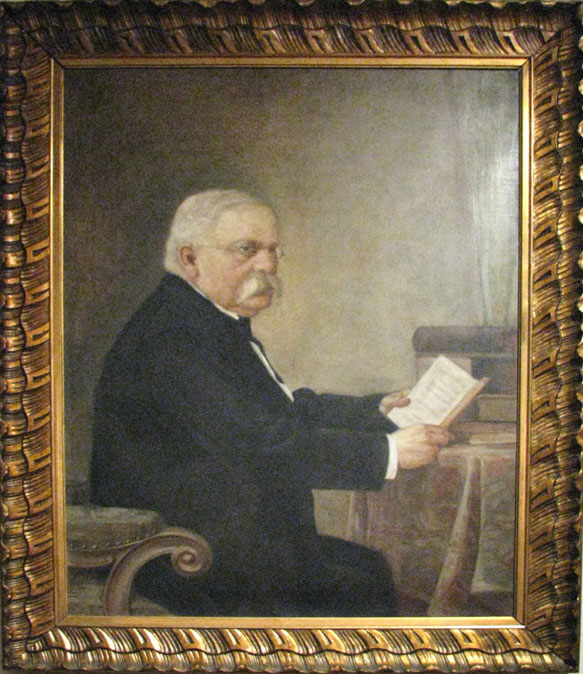
Janko Kamauf painted by Bela Čikoš Sesija, showcased in Zagreb City Museum © Unkown author, Wikipedia
He was the first, but was he the best?
I asked several historians if could they rate and pronounce in their opinion, with regards to the specific contexts, who was the best Zagreb mayor, from Kamauf to Vukičević Pavičić.
Two votes for Većeslav Holjevac!
„I'm not into grading, that's not a historian's task. Our task is to explain and put on the table facts and context of events“, said Ivo Goldstein when I asked him about the best mayor of Zagreb.
Ivo Goldstein may be best known to the Croatian public as a harsh critic of the far-right and the fascist regime of the Independent State of Croatia. As a Historian, he took an interest in various topics related to Croatian history.
At the start of his career, his focus was on Byzantine Empire and Croatian Middle Age History as well as the history of Jews in Croatia. In mid 90's he moved to the various aspects of Croatian history in the 20th century.
He was a professor of various history courses „General History of the Middle Age“ (1984-2003), history of methodology (1991-1996), and many more and today a full-time professor at the Department of History on The Faculty of Humanities and Social Sciences, the University of Zagreb (where he mastered and later completed his Ph.D. thesis at the Faculty of Humanities and Social Sciences, University of Belgrade).
Goldstein's scientific papers received positive acclaim in various countries worldwide, he hosted various projects scientific projects and associations and is very active in Croatian public space when it comes to historical issues that shape the ideas and decisions of current policies in Croatia.
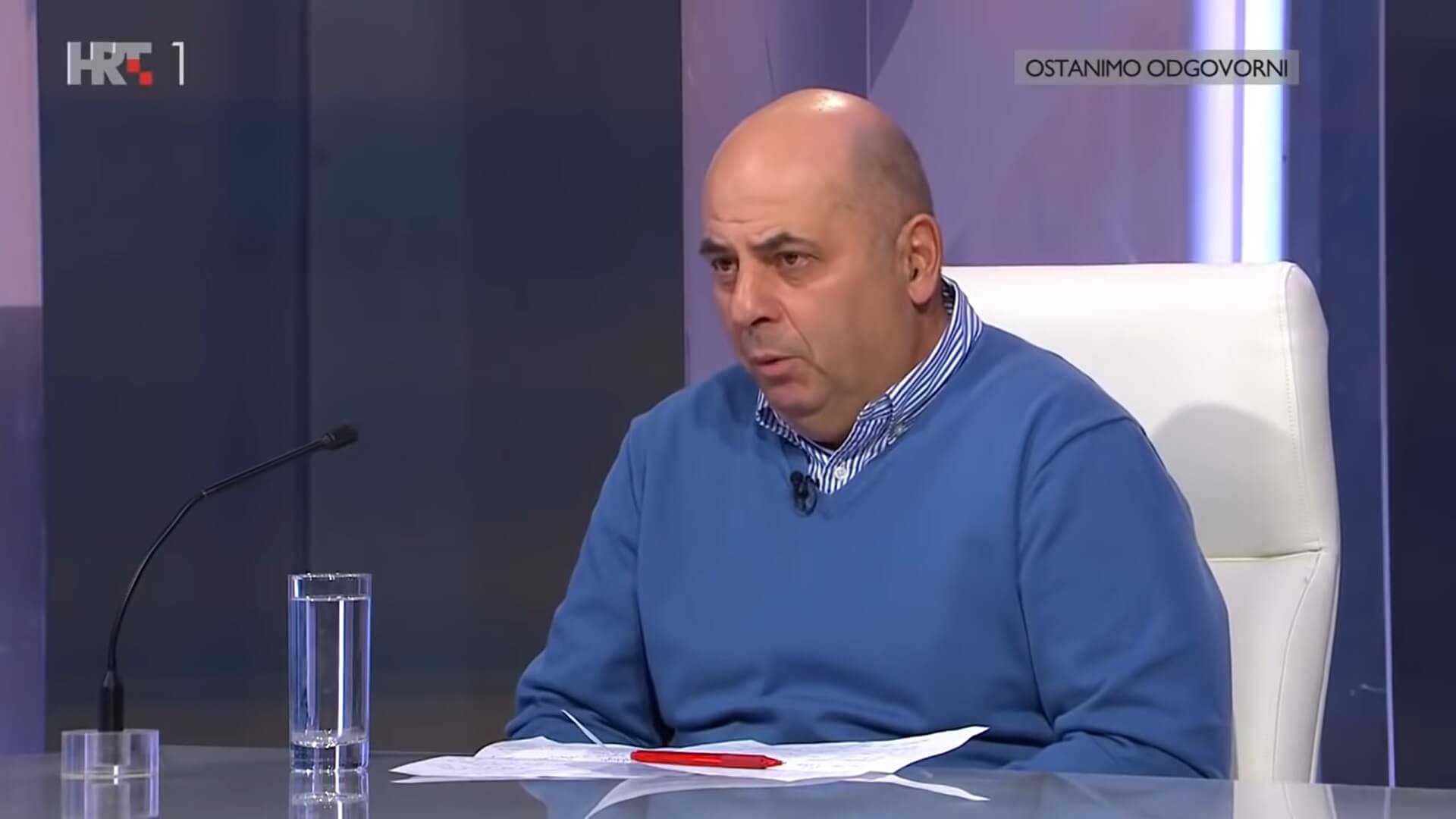 Ivo Goldstein / screenshot HRT Nedjeljom u 2
Ivo Goldstein / screenshot HRT Nedjeljom u 2
Upon explaining the role of historians, professor Goldstein nevertheless didn't mind giving his personal opinion.
„For me, there is no doubt that the best mayor of Zagreb is Većeslav Holjevac“, said Goldstein.
Većeslav Holjevac was the Mayor of Zagreb from 1952-1963 and his eleven-year mandate saw Zagreb develop and spread as the city.
„At that time, Zagreb was the capital city of Socialist Republic of Croatia, which was part of Yugoslavia. Holjevac saw a boost by liberal politics, it was the time of growth and optimism and Holjevac knew how to use it. He was a man of action and used Yugoslavia's opening to the world to Zagreb's benefit“, explained Goldstein.
He added that Holjevac didn't want to be perceived as some sort of transmission of higher state authorities. He didn't hide behind forums and was an independent, free-minded politician, which made him known and beloved among citizens.
„But it made him unloved among the higher power of authority which ended his mandate, although we historically don't know the real reason why Holjevac stopped being mayor“, Goldstein pointed out the mystery which is yet to be cleared up by historians.
The key term of Holjevac's mandate is the General Urban Plan which saw the development of the Most Slobode (Bridge of Freedom), expansion of Zagreb city to south across Sava river, and what today is Novi Zagreb (New Zagreb), as well as building up Zagreb Airport.
„Holjevac knew how to surround himself with good associates who were both dreamers and experts. Holjevac also engaged himself in the projects and his associates felt safe and that he got their back“, explained Goldstein.
The best example of that boldness and visionary approach can be seen in the Zagreb fair which was at that time located at the place of today's Student Centre in Savska.
„The fair needed expansion but was surrounded by railroad tracks everywhere, and the question was how to expand it. There were several options, but Holjevac decided to take it across the Sava river, and it happened. It was quickly constructed, and the first fair on newly build location was the Autumn fair in 1956. and it was the biggest event of its kind in the world back then“, said Goldstein, gladly adding he even had a chance to meet Holjevac as a 12-year-old since the mayor knew his father, an established Croatian intellectual, and politician, Slavko Goldstein.
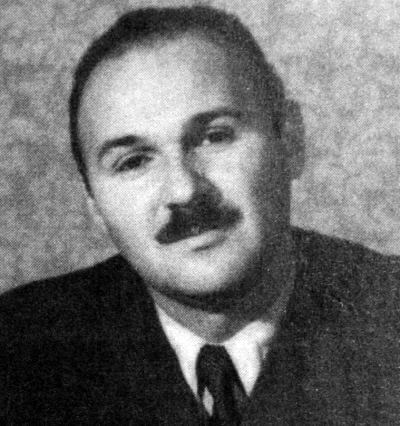
Većeslav Holjevac © Udruga Kameleon / Wikipedia
Hrvoje Klasić was professionally most occupied by Većeslav Holjevac, so he also shares Goldstein's opinion about Većeslav Holjevac.
„In a sentence: Zagreb has never been more developed as it was after Holjevac“, summarized Klasić.
Hrvoje Klasić graduated in 1997 from the Department of History, Faculty of Humanities and Social Sciences at the University of Zagreb. At the same University, he defended his dissertation entitled “1968 in Yugoslavia. Socio-economic changes in an international context”. Since 2003 he has been employed as a professor at the same Faculty and University.
Today, he holds a number of courses related to the world and national history of the 20th century.
Hrvoje Klasić also won the Annual Award of the Association of University Teachers and other Scholars in Zagreb in 2006. That same year he won the Annual Award of Sisak City for the Book „Croatian Spring in Sisak”. He is the author of 3 more books and the author of two documentary series „Croatian Spring“, and “The Independent State of Croatia” produced by Croatian Television. In 2017 The Serb National Council in Croatia gave him an award for the improvement of Croatian-Serbian relations. In 2019 he won the Award for the promotion of peacebuilding, nonviolence, and human rights.

Hrvoje klasić © Hrvoje Klasić
„Most people don't know that Holjevac technically wasn't a mayor, rather he was a president of the City's National Council“, explained Klasić the precision of the functions in the previous Yugoslavian state. He added that while his term lasted from 1952-1963, that is only partially true because he was first appointed to lead Zagreb in 1945.
„In 1945, he was named the city commander who was a military function but he was also in charge of food, traffic, working with several refugees after World War 2 until he gave the control over to civilian bodies“, describes Klasić.
Holjevac then moved on to be the minister of work and traffic in the Social Federal Republic of Croatia. However, at that time, Yugoslavia was going under a change in its political institutions by the self-governing policy which went under parole „factories to workers, cities to citizens“, and as a result, Holjevac 's ministry was shut down. His return to the top position in Zagreb happened without him even knowing.
„As part of self-governing, the Communist Party in Zagreb searched for someone who isn't just going to execute orders from above but instead is an individual that has quality, creativity and will make its own decisions. Holjevac was elected during a meeting he wasn't even present on, and some members of the party were worried is it smart to give Zagreb to a person who is from Karlovac“, said Klasić.
As Goldstein already mentioned, his term lasted over a decade, and Klasić adds that was a very unusual duration at the time.
While Goldstein already mentioned the traffic connections of Zagreb, Klasić said it is very hard to count everything Holjevac built, but he put focus on the industry. Industrial plants of organic-chemical industry, Zagreb heating plant, industrial plants of Pliva pharmaceuticals, Chromos paint company, Kemika, Zvijezda company, Katran, Badel company for alcohol spirits, an ice rink on Šalata, winter pool and gymnastics gyms on Mladost, Yugoton record company, Jadran Film, TV tower on Sljeme, Zagreb drama theatre, an emergency room in Draškovićeva, various elementary and high-schools, and began construction of Vatroslav Lisinski concert hall and more.
„Before Holjevac, there were 40,000 workers in Zagreb. After Holjevac, there was 110,000“, said Klasnić to illustrate the results which made the city the strongest industrial center in Yugoslavia. Apart from industry, Holjevac put a lot of focus on culture and education, as evident by building Workers University Moša Pijade for adult education (today's Public Open University Zagreb) and culture.
Holjevac's „Jump over Sava“ was done on the one hand to prevent interventions in old Zagreb, and on the other, the organizational construction of Novi (New) Zagreb saw the workers live close to the newly built factories.
As Goldstein already referred to Zagreb Fair as perhaps the most significant project of Holjevac's mandate, Klasić added that the unique geopolitical position of Yugoslavia as the bridge between east and west, thanks to the non-aligned movement, made the fair a key place worldwide.
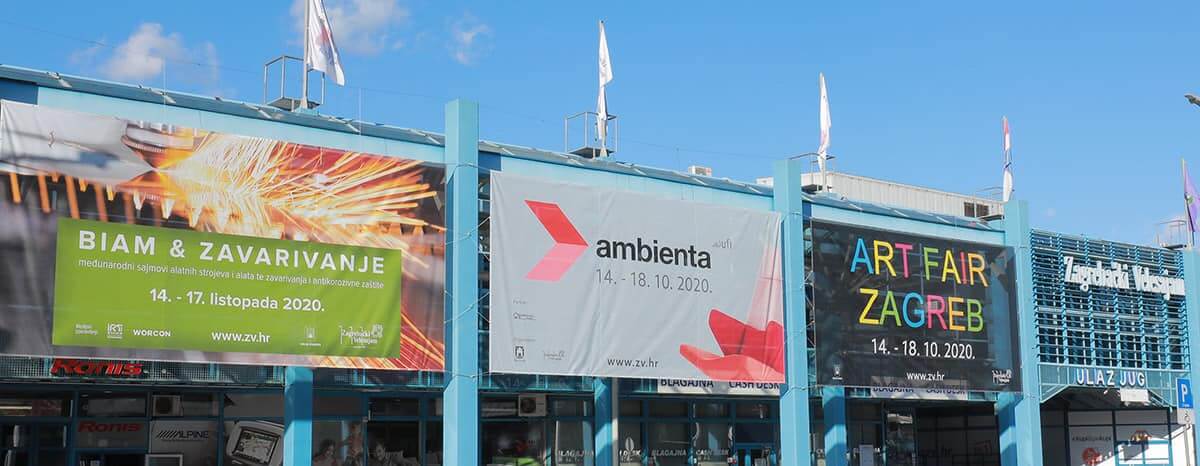
Southern entrance of Zagreb Fair in 2020 © Zagrebački Velesajam
„The fair was not just important for holding exhibitions, but for making deals and signing contracts as well. Given Belgrade was the capital of Yugoslavia, there were pressures to have such a fair there, and there were even boycotts from Belgrade to Zagreba Fair events. However, Holejvac being both persistent and enjoying support by the Yugoslavian president Marshall Josip Broz Tito, managed to keep this significant place in Zagreb“, explained Klasić.
When asked about resentment of other politicians, and the unclear mystery of concluding his mandate, Klasić said he had a chance to look at archives about Holjevac while working on an exhibition about him, and he feels that the situation is much simpler.
„Holjevac basically left due to the same politics that got him to be the mayor in the first place. The Self-Governing model started descending to the lower levels of the system and started searching for creative people. In 1963, a new constitution was brought that further developed the political system to give City Assembly more power accenting the community governing Zagreb. Holjevac's president of City's National Council title has shut down, and the president of Assembly became the first man of Zagreb.
Rotation of politicians as well as limited mandate time was arranged too“, explained Klasić.
He added, however, that it is problematic that an experienced, capable, brave, and brilliant man like Holjevac wasn't put to better use after he stopped being mayor and played bigger roles in Yugoslavian political life.
There isn't the best, only good and bad mayors
Unfortunately, other historians, I contacted (and of course, I couldn't contact every single one, who knows who else might be interested to participate), didn't respond to my inquiry. While Ivo Goldstein explained rating mayors isn't historian's job, Stevo Đurašković, professor at the Faculty of Political Sciences in Zagreb, further elaborated the problem of my question.
„I'm not a fan of such an approach to the topic like it's a miss pageant. In Zagreb's history (as in good portions of cities around the world). There were several great mayors, again, each in its own historical context“, explained Đurašković.
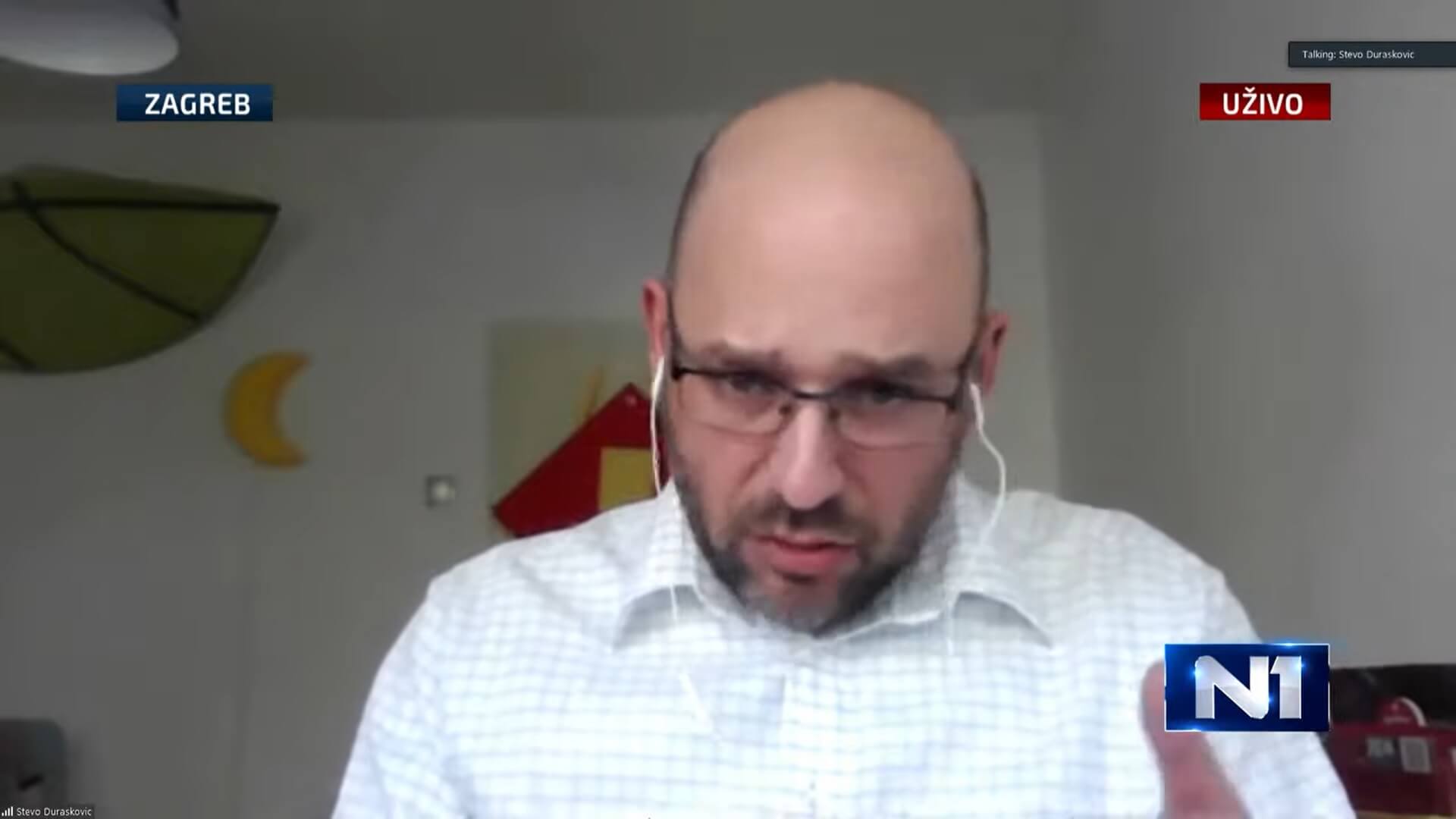
Stevo Đurašković, screenshot / N1
Stevo Đurašković is an Assistant professor at the Faculty of Political Sciences, University of Zagreb, where he teaches courses in politics of history and Croatian history. He received his Ph.D. in Political Science from the Faculty of Social Sciences at the University of Ljubljana and his MA in Central European History from the History Department at the Central European University, Budapest. His research interests include the politics of history, intellectual history, and national identity-building processes in East-Central and Southeastern Europe. Recently he published the book The Politics of History in Croatia and Slovakia in the 1990s (2016). Participated in several international projects, including “Identity Reader: Regional Identity Discourses in Central and Southeast Europe, 1775-1945” (CAS, Sofia). He is a member of the editorial board of the Cultures of History Forum (Imre Kertész Kolleg, University of Jena). In 2009/2010. He was a Ph.D. research fellow at the Faculty of Economic and Social Sciences, Comenius University, Bratislava (CEEPUS grant, Visegrad Fund grant).
In other words, an expert in his respective field with a valid and knowledgeable opinion.
„Milan Amruš and Većeslav Holjevac were great mayors. How to determine if Amruš's development of pre-war Zagreb is greater than Holjevac's post-war development of Zagreb?“ concluded Đurašković his decline to comment who would be the best mayor of Zagreb.
Speaking of Amruš, he was Zagreb mayor in two separate mandates, the first one lasting from 1890 to 1892 and the second from 1904 to 1910. Lice Grada reports that some of the accomplishments in Maruš terms include electrification of the city, and building up Munjara Power Plant (in 1906 and 1907). Under Amruš's mandate, the website continues, horse trams were replaced by electric trams in 1909 and new tram lines and the expansion of the previous one from Ilica to Topnička Barracks were constructed. In addition, 1890 saw lower and upper Zagreb connected by a funicular.
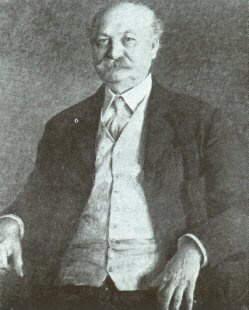
Milan Amruš © Unknown author Wikipedia
Đurašković also added in his decline that Pero Pirker is often „a forgotten mayor“, and Klasić mentioned him as the Holjevac's successor. Mentions of Pirker are also noted on Nacionalne Manjine (National Minorities) site that declared Pirker as a noted Zagreb mayor.
"There is no doubt that Pirker is one of the most capable, most successful, and in its time an extremely popular mayor. But it is stunning that for political reason, considering he was one of the established champions of Croatian Spring in 1972, his work was completely silenced not only until the 1990s but also later“, wrote Goran Beus Richembergh for Nacionalne Manjine.
It's worth noting that the Croatian Spring was a reawakening of national identity which paved the way for the country's independence and the dissolution of Yugoslavia, on which TCN reported on its 50th anniversary earlier this year.
In Pirker's time, the Great flood that sank Zagreb in 1964 was truly the historical challenge of his mandate.
„It was a natural disaster of great extent, and the entire previous state (Yugoslavia) was involved in sanitation and help was arriving from all over the world. But, the biggest responsibility for the coordination of help, sanitation of the damage, taking care of the casualties, and building new homes was carried out by Zagreb's authorities, lead by Pirker who showed to be a skillful manager and successful in various projects“, described Beus Richembergh.
Amruš had the challenge to electrify Zagreb to keep up with other European capitals, Holjevac had the challenge of restoring and developing the city post WW2, and Pirker had the flood.
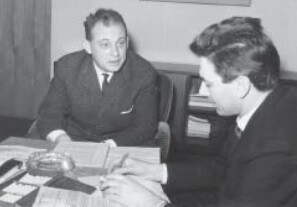
Pero Pirker (on the left) © Croatian Journalist Association / Wikipedia
Both corona and earthquake, as well as the mess suspected to find post-Bandić, are all just another challenge in the history of a town that is used to be challenged and always dancing victory laps.
While Đurašković explained comparisons of what was the most difficult challenge and who was the best mayor make no sense, Goldstein and Klasnić presented their pick. But, as respectable historians they are, they emphasized that it is their opinion and not an empirical fact, even though their arguments are both knowledgable and well explained.
In the end, politics should be about making people's lives better and not about chasing crowns or historical acknowledgments. And as Zagreb really needs a quality leader, the only logical conclusion is: may the best candidate wins, and may purgers recognize the best man or women for Zagreb to once again wave the middle finger to the aftermaths of the recent crisis as it overcomes them.
Learn more about Zagreb on our TC page.
For more about history in Croatia, follow TCN's dedicated page.
Miroslav Krleža Institute of Lexicography Publishes Book On All things Turopolje
May 7, 2021 - Last month, The Miroslav Krleža Institute of Lexicography had a presentation in Velika Gorica regarding the newly published book on all things Turopolje.
The ever-fascinating region of Turopolje, not so far from Zagreb, as the largest city of the region is Velika Gorica (connected by Zagreb with a regular public service bus) earlier this month good a book that gives an overview of every knowledge collected about Turopolje. Or in a noun: a lexicon.
As The Miroslav Krleža Institute of Lexicography informs on its website, the end of April saw the presentation of the latest work in the edition of the Institute in Velika Gorica.
In respect to the epidemiological measures, the presentation was held among a limited number of journalists and attendees. Nina Obuljen Koržinek, the minister of culture was present along with the mayor of Velika Gorica Krešimir Ačkar, and the head if Miroslav Krleža Insitute, Bruno Kragić. The county ruler of the noble county of Turopolje Mladen Klemenčić was present too and talked about the book. Katja Matković Mikulčić, the headmistress of Velika Gorica City Library and a co-editor of the lexicon, had an opening speech.
The accompanying culture program saw an actor and singer Adam Končić recite poems by Krleža (a famous Croatian writer, poet, publicist, and encyclopedist the Institute was named after) and pupils from Franje Lučić Art School that sing with the back-up of Krešimir Starčević that followed the notes of a famous conductor from Turopolje Franjo Lučić (the inspiration for the name of the art school).
As usual, the Institute was determined to gather as a wider circle of associates as possible, especially the authors. Some of the authors are individuals from heritage, educational, and cultural institutions, but researchers from specific scientific areas and noted publicists contributed to the book as well.
„The project started with the overwhelming support of the City of Velika Gorica, the central administration unit of Turopolje, and the cooperation contract was signed in 2018. With its concept and graphics, this lexicon continues the previous editions of the Lexicography Institute, which focuses on individual Croatian regions (Istria, Croatian Zagorje) or towns (Zagreb)“, the Institute's website quotes the foreword of the book.
When it comes to history, science, and art, museums are great institutions to learn more. You can learn more about museums in Croatia on our TC page.
For more about science in Croatia, follow TCN's dedicated page.
Ivo Pilar Social Research Institute: Celebrating 30 Years And New Office on Vis Island
May 6, 2021 - Ivo Pilar Social Research Institute celebrates its 30th birthday in 2021, and they recently opened a branch office on Vis Island.
The end of April saw the Ivo Pilar Social Research Institute, named after Ivo Pilar, a researcher and a publicist whose work immensely influenced social and humanistic science scenes in Croatia- open a branch office in the City of Vis on Vis Island.
Head of the Institute dr. Željko Holjevac, the head of the new Center Ljiljana Kaliterna Lipovčan, and Vis mayor Ivo Radica were the speakers at the official opening.
„I'm glad that, after Vern University left Vis, that the academic community is back to the City of Vis, to the Island of Vis, our most distant habituated island. We hope that through the Institute we will be able to use all the benefits of the Institute especially in the demographic development of the city and that we as politician try to take a better direction to put our most distant island on the position it deserves“, said mayor Radica on the opening ceremony.
He added that the negotiations for opening the research centre were practically concluded in five minutes.
Dr. Željko Holjevac stated that the idea of establishing the Centre was years in the making, but the position of science and other problems and crisis blocked the idea from turning to reality. However, Vis was once a very good place for science in Croatia.
„Every two years we hosted a science conference on Mediterranian here on Vis, and it received worldwide attention. From every continent, there was a scientist with interest in Mediterranean attending“, said Holjevac referring to the Mediterranean Islands Conference, whose last event took place on September 2020.
With Zagreb, Split, Osijek, and Rijeka being known as the centers of both science and education, Holjevac added that bringing science to smaller communities is vital for the country.
„When we talk about development, sustainable development, or an island development, that is unimaginable without science. If we want the society of knowledge, we need to bring science closer and not work on the distance“, concluded Holjevac.
The new Centre is located at the address Šetalište Viški Boj 13 next to the Memorial Collection of a famous Croatian writer Ranko Marinković.
30 Years of Ivo Pilar Insitute
As the Institute's website reports, the Institute was established on November 26, 1991. Going through some legal changes which renamed him from the Institute For Applied Social Research of Zagreb Universit to the current name, and also shifting it from the University of Zagreb to the foundation of the Republic of Croatia – the Institute turns 30 years of existence in 2021.
In that honour, the Institute announced to do several actions:
-To publish the first edition of critical translation for the book „South Slavic (Yugoslav) Question“ by Ivo Pilar from 1918.
-Make and publish Pilar's Kaleidoskop of Croatian society.
-Organise themed lectures in branch offices of the Institute.
-Promote projects, scientific and professional activities of employees.
-Organise Sabbatical journeys (pending on epidemiological situation).
-Publish jubilee issue of „Social Research And Pilar“ magazine.
-Visit the grave of dr. Ivo pilar on Mirogoj cemetery (on Pilar's 88th death anniversary on September 3, 2021).
-Organise scientific conference in Vukovar in early November
And last but not least, to have a celebratory meeting on November 26, the exact date of the 30th birthday of the Institute.
If you also have an interest in social questions, you can learn more about religion, politics, education & diversity in Croatia on our TC page.
For more about science in Croatia, follow TCN's dedicated page.
Ruđer Bošković Science Institute Combats Climate Change by Developing New Material
May 5, 2021 - With ecology being the key to survival, the Ruđer Bošković Science Institute combats climate change by developing a new material known as CuZn-MOF-74.
The pandemic is nasty, the nuclear holocaust is a scary thought, but greenhouse gases remain an omnipresent potential for the death of us as they trigger climate change on whose negative effects scientists have been warning us about for decades.
Like the United States, the Environmental Protection Agency informs on its website, these gases trap the heat in the atmosphere, which in terms raises the temperature we experience.
The website lists the main types of these airier troublemakers:
CO2 (Carbon dioxide - enters the atmosphere through burning fossil fuels (coal, natural gas, and oil), solid waste, trees, and other biological materials, and also as a result of certain chemical reactions. It is removed by plants that use it for photosynthesis – a process that provides food for the pants and oxygen for other beings).
CH4 (Methane-emitted during the production and transport of coal, natural gas, and oil. Methane emissions also result from livestock and other agricultural practices, land use, and the decay of organic waste in municipal solid waste landfills).
N2O (Nitrous oxide - emitted during agricultural, land use, industrial activities, combustion of fossil fuels and solid waste, as well as during treatment of wastewater).
Last but not least:
Fluorinated gases ( such as Hydrofluorocarbons, perfluorocarbons, sulfur hexafluoride, and nitrogen trifluoride are synthetic, powerful greenhouse gases that are emitted from a variety of industrial processes. Fluorinated gases are sometimes used as substitutes for stratospheric ozone-depleting substances. These gases are typically emitted in smaller quantities, but because they are potent greenhouse gases, they are sometimes referred to as High Global Warming Potential gases)
Each of these gases can stay in the atmosphere for a very long time, and transferring these gases into something else is a challenge to beat. Fortunately, at least for carbon dioxide, we might be getting closer to the solution than we think.

Pixabay
Ruđer Bošković Science Institute (IRB) in Croatia reported on its website that they are at the brink of a new material that can selectively transform carbon dioxide into methanol alcohol. The green chemists in Zagreb were closely cooperating with colleagues from the Slovenian Chemical Institute (KI), and McGill University in Canada. The results of their mutual research, in a more further scientific detail, are published in a scientific article on the prestigious ACS Publications.
But in the summarization, doctoral candidates Tomislav Stolar and Valentina Martinez, alongside dr. Bahar Karadeniz, under the lead of dr. Krunoslav Užarević (IRB), and dr Tomislav Friščić (McGill University) developed a bi-metal proposal coordination material known as CuZn-MOF-74. The layman speaking complex name is owned to the fact it's made from copper (Cu) and zinc (Zn) using a mechanic-chemical method of making bi-metal metalorganic networks known as MOF-74. As TCN previously reported, that method is an environmentally sustainable synthetic strategy that is further elaborated in a scientific article in 2019.
The catalytical properties of this material were tested KI in Ljubljana with the help of the scientists from the Institute: dr. Blaž Likozar, dr. Gregor Mali, dr. Ana Bjalić, and Anže Prašnikar.
The results have shown that this material has a modest catalyst (meaning it speeds up) activity to synthesize methanol, and post-reaction presented the scientists with a non-porous material which showed multiple enhancement of both catalyzation and selection for methanol synthetization.
„This research is a good example of multidisciplinary and international collaboration between strong research centers in the region. To me, as a young scientist, it's important that I can work on the current issues, such as transforming carbon dioxide into methanol, thanks to the guidance of dr. Užarević. There is a big potential for switching to sustainable chemical processes through the program of European Green plan, and research in that field should be the priority“, said the lead author Tomislav Stolar, a doctoral candidate in the IRB's laboratory for green synthesis.
The IRB official website added that the search for an effective catalyzation to transform carbon dioxide into methanol is the focus of scientists worldwide. Methanol could also be then used as a fuel and replace the current fossil products.
Today you already have the term „Methanol Economy“ that predicts methanol will impose as the vital compound to store energy, as a fuel, and a source of carbon to synthesize valuable compounds. Efficient synthesis of methanol from carbon dioxide presents an example of sustainable chemical reaction of added value, and with great economic potential“, concludes the press release on IRB.
Apart from IRB scientists combating climate change, Croatia takes care of the environment, particularly national parks on whom you can learn more on our TC page.
For more about science in Croatia, follow TCN's dedicated page.
Zagreb Museum of Contemporary Art Exhibition on Former Zagreb Mayor Većeslav Holjevac
April 4, 2021- Following the 50th anniversary of the death of Većeslav Holjevac, the Zagreb Museum of Contemporary Art exhibition on the former and historically significant mayor is an excellent opportunity to meet the guy who shaped Zagreb in the previous century.
Apart from the horror of the pandemic and earthquakes, 2020 was the 50th anniversary of the death of Većeslav Holjevac – who is considered to be one of the greatest mayors in Zagreb's history.
As ZG Portal reports, last month an exhibition dedicated to Holjevac started in the gallery of the Museum of Contemporary art, and you can view it until May 20.
The Zagreb of Većeslav Holjevac 1952 to 1963 – Urbanist Vision And Architectural Reach is an exhibition that takes a look at the eleven-year mandate of this significant mayor who transformed Zagreb in the post World War 2 era. Fifty themes and representative examples of urban and architectural achievements which were built, projected, or planned in Holjevac's term. This included three key Strategic urbanistic documents which played a key role in the development of Zagreb and were decided at that time.
The authors of the exhibition are architect Ivan Mlinar which conducted Urbanistic research on Zagreb in the time of Holjevac, and historian Hrvoje Klasić who was in charge of biographical research.
The exhibits were donated by the Museum of Contemporary Arts, Zagreb City Museum, Architecture Museum of Croatian Academy of Sciences and Arts, Faculty of Architecture on Zagreb University, Jadran Film, and Zagreb film studio.
The 35th Zagreb mayor and the total number of mayors in Zagreb throughout its history includes 52 names. Today, Većeslav Holjevac has his own avenue at the entrance to Most Slobode (Liberty bridge), which allows citizens to cross the Sava river and enter Novi Zagreb (New Zagreb), and the statue of Holjevac overlooks the area of Zagreb he built in what is commonly known as „Jump Over Sava“.
Apart from being mayor, Holjevac took various different roles in the former Republic of Yugoslavia. Known as a bold person with vision, competence, and bravery, he made Zagreb one of the most developed cities in Yugoslavia, and despite having various rivals, he enjoyed the support of Yugoslavian president Marshall Josip Broz Tito, which allowed him to make his projects a reality.
Learn more about Zagreb on our TC page.
For more about history in Croatia, follow TCN's dedicated page.
First Croatian Scientific Book on Excellence as a Standard in Hospitality Released!
April 6, 2021 - The first Croatian scientific book on hospitality (Excellence as a Standard in Hospitality Business) backed by the experiences of two respected authors in the business has been released!
As Turizmoteka reports, the book published by the Aspira school (original title: Izvrsnost kao standard u ugostiteljskom poslovanju) has four chapters and 24 subchapters which will help further develop the business to the experience and allow unexperienced to set up the optimal business concept“.
The book covers specifics of the hospitality business, criteria for hiring new workers, explores questions of discipline and offers interesting findings on why some bars and restaurants fail and others remain successful. Scientific research of the book is accompanied by the experiences of the authors who are very experienced in the hospitality business.
The leading author Igor Pavel previously published a manual on managing in the field, which inspired the writing of the book. He is in the hospitality business for the past 16 years, where he gained experience in various aspects and from multiple positions and is currently hired as a manager in one of the largest American cruise ship companies. He closely worked with top managers and CEOs of various big international tourism and hospitality companies. He also trains management and workers with his educational material helping them to increase the quality of their standard.
The second author, Alen Jerkunica, is a dean and one of the founders of Aspira private school, which has international courses on hotel management and tourism as well as gastronomy in Split and Zagreb. Continuously cooperating with experts from hotel management, he also participates in research projects with scientists specialized in marketing and management in sport and tourism.
The book is so far available only in Croatian, and you can buy it here.
For more about made in Croatia, follow TCN's dedicated page.
Ruđer Bošković Institute Builds 100% Spy-Free Communications System
September 3, 2020 – Scientists from the Ruđer Bošković Institute in Zagreb were integral to an international effort to realise the world's first fully functioning quantum communication network. 100% spy-free, it's the communication system of the future
Despite what some apps tell you, no online communication is completely secure. However, we have moved one step closer to that becoming a reality thanks, in part, to quantum physicists from the Ruđer Bošković Institute (RBI) in Zagreb.
Working in collaboration with scientists from the University of Bristol (UK) and the Institute of the Austrian Academy of Sciences, the international team have built the world's first fully functioning quantum communication network.
Quantum communication is a well-known field of applied quantum physics. For years, one of its most interesting applications has been regarded as its ability to protect information channels against eavesdropping. It does this by using quantum cryptography.
The security of quantum transmissions are ensured by the no-cloning theorem. This makes reproduction, or cloning, of a quantum system impossible without instant detection. If someone attempts to read the encoded data, the quantum state will be changed via the no-cloning theorem. Quantum communication is also much faster than traditional methods of communication because entangled photons can transmit information instantaneously.
The computer and communications systems of the future have been on the radar for a long time. Industry giants like Google and IBM are already investing millions in quantum computer hardware research in anticipation of our sure-fire futures.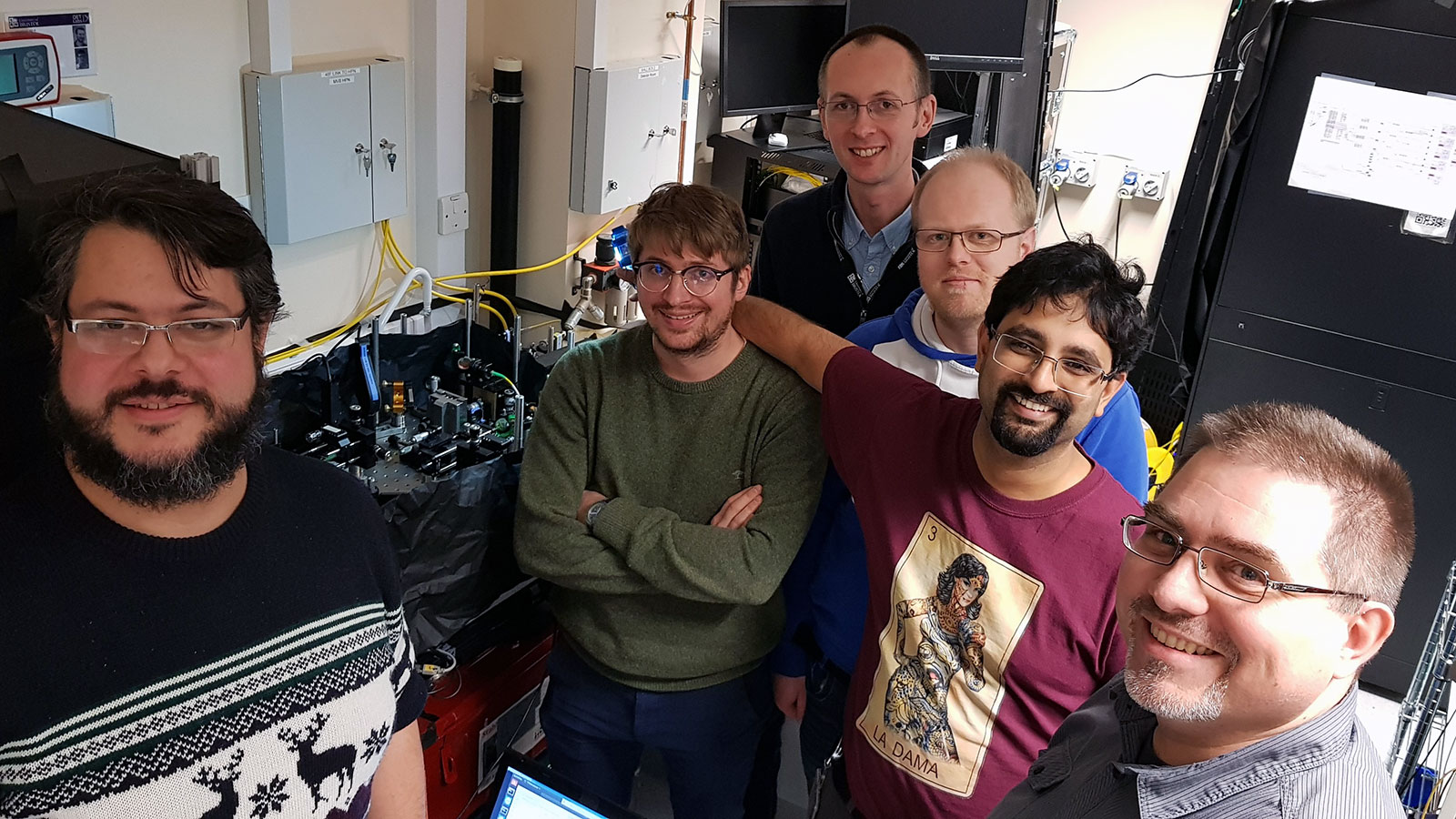
The team of scientists from the Ruđer Bošković Institute involved in the breakthrough © Ruđer Bošković Institute
The difficulty of introducing quantum communications has been the construction of a large and easily expandable quantum-protected network. It's proven incredibly complicated to build a template for a potentially limitless number of users while also maintaining connection stability. But, that's exactly what the international team containing scientists from the Ruđer Bošković Institute have done.
The scientists from the Ruđer Bošković Institute designed and made the optical receivers for the network. This is the part of the system that will be employed by the end-user. The team of Croatian scientists from the Ruđer Bošković Institute involved in the breakthrough includes Dr Martin Lončarić, Dr Mario Stipčević and Željko Samec. The team published their world first in the prestigious scientific journal Science Advances.
Founded in 1950, the Ruđer Bošković Institute is the largest Croatian research institute working in the fields of natural sciences and technology. It operates in many different areas of scientific research, has been responsible for countless scientific discoveries and employs over 500 academics and students. It has an annual budget of over 20 million Euros and receives the majority of its funding from the Croatian state.
Croatian Scientists Prove Mushrooms Help Stop Colon Cancer
August 29, 2020 – The team of Croatian scientists' published results prove that extracts from a medicinal fungus stop tumours growing, spreading and help chemotherapy.
A team of Croatian scientists has proven that a known medicinal fungus can be used in effectively fighting colon cancer. They published their findings in a renowned science journal over the past week.
The team, led by Boris Jakopović (Dr Myko San, Croatia), presented the results of effects on colon cancer by a complex series of extracts from the Agarikon.1 medicinal mushroom. They proved that the extracts strongly inhibit the growth of existing tumours and prevent the spreading of the disease. Boris Jakopović has been testing the effectiveness of medicinal mushrooms on cancer for several years.
A further positive effect on a number of other proteins - biomarkers associated with a better prognosis for progression of the disease - was also found and detailed in the study. This effect of the mushroom extracts can significantly enhance the effectiveness of standard chemotherapy and also alleviate its side effects.
Croatian scientists who also undertook the work and co-signed the published findings were Anita Horvatić from the Faculty of Veterinary Medicine in Zagreb, Nada Oršolić from the Faculty of Science in Zagreb, Marko Klobučar, Sandra Kraljević Pavelić and Petra Grbčić from the University of Rijeka. Andrea Gelemanović from the Mediterranean Institute for Life Research in Split and Ivan Jakopović from the company Dr Myko San.
For the latest travel info, bookmark our main travel info article, which is updated daily.
Read the Croatian Travel Update in your language - now available in 24 languages


